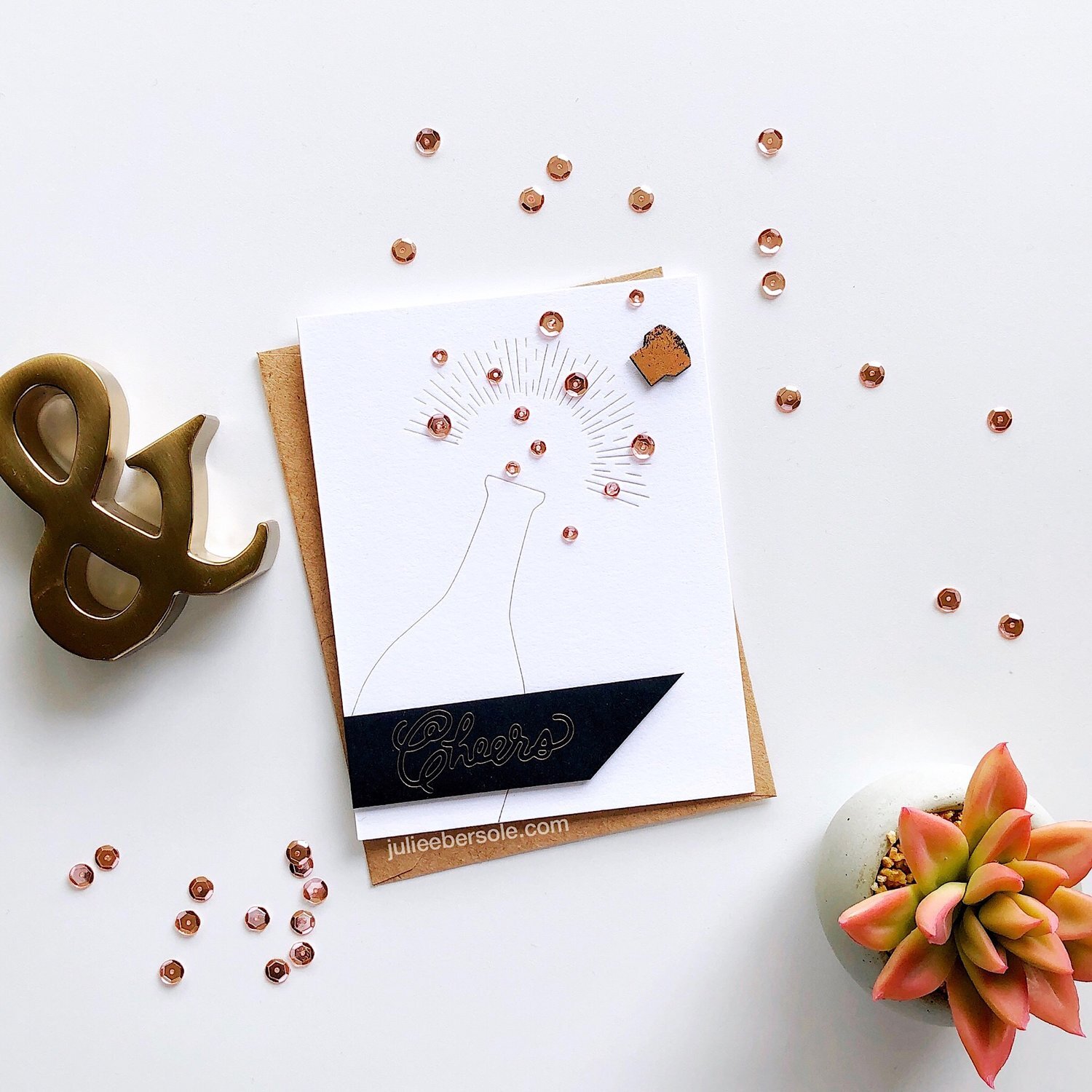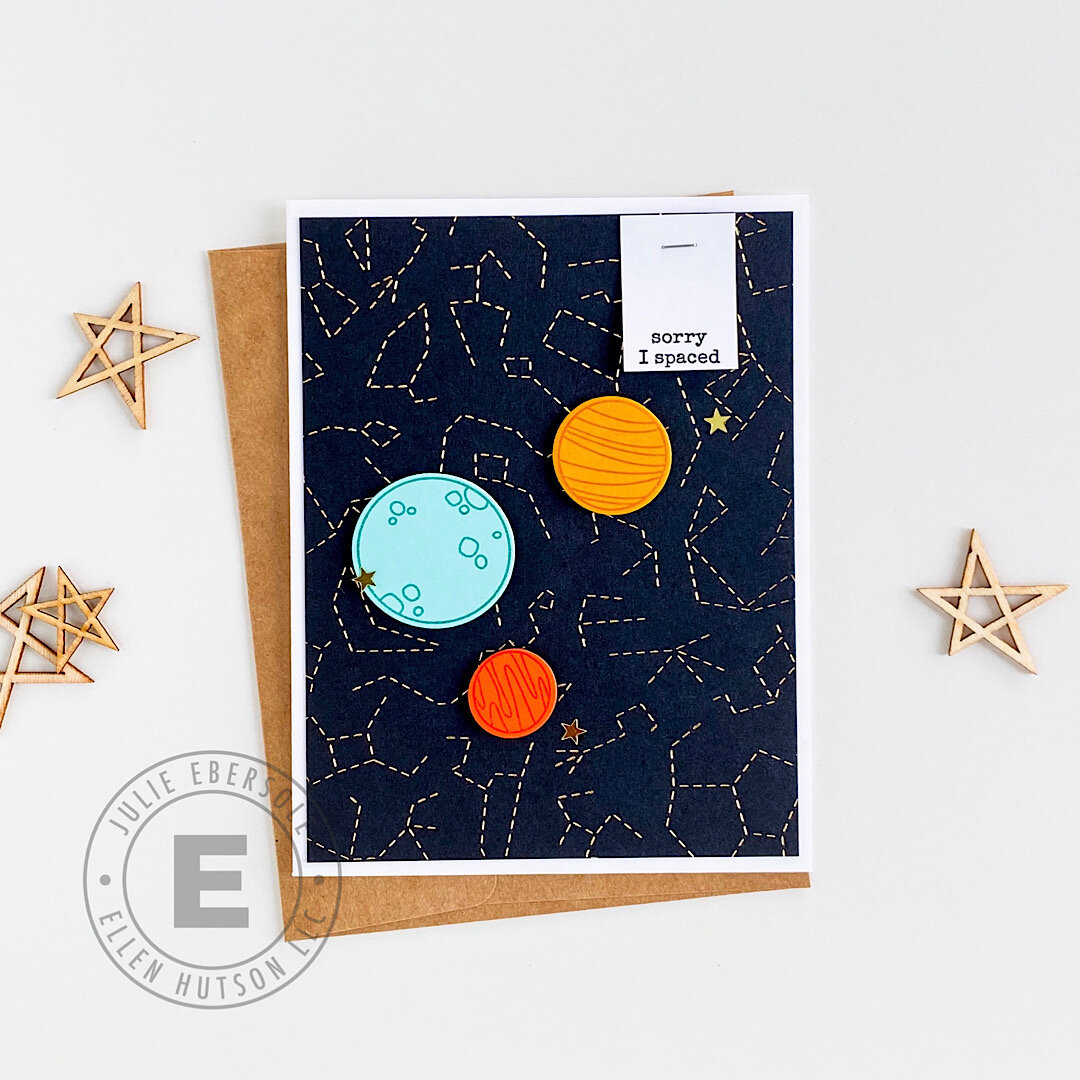feat. DEER COUPLE DIES / TIS THE SEASON
Joan Bardee, a.k.a. Dear Paperlicious has shared a number of card designs featuring bold colors that just had me craving to make something along the same lines . . .
“Ink swiping” is an oldie but goody that fit the bill so I grabbed some Altenew Dye Ink Cubes for this project.
The sentiment was clear embossed over the ink swiping so the colors would show through—I love this look so much! But, a word to the wise: Make sure the inked surface is COMPLETELY dry before heat embossing. Sit on your hands and wait, or be like me, •hair flip• and heat set, then pounce the surface well with an anti-static powder (blow excess off before stamping) so the embossing powder only sticks to the embossing ink from the sentiment itself.
The deer couple looks so elegant and sophisticated all in white—I just layered the die cuts multiple times to create faux chipboard, and then spot foiled some details using a Zig Two Way Glue Pen and some gold I-craft Deco Foil
INK SWIPING TIPS:
Pigment inks or dye inks work for this; you can use full size or ink cubes, as I did here, but having them well inked (as opposed to dry) will tend to give you the best results. Dry ink pads can result in the pad separating from the base, instead of gliding over the paper surface.
Depending on the desired effect, small cubes can be easier when applying multiple colors.
SPOT FOILING TIPS:
Use a glue that remains tacky when dry; I personally like Zig Two Way Glue Pens because they go on blue, but become clear when dry.
Make sure the glue is dry and tacky or foil will not transfer.
Apply transfer foil with pretty side up; use pads of your fingers (not your nails) to rub firmly to transfer the foil. For a project like the above, scraps of foil are all you need, so it’s worth saving foil scraps . . . just sayin’ . . . •wink•
Have you tried ink swiping? I should remember to use it more often.
Thanks for stopping by and continue to stay safe and healthy out there!
SUPPLIES:
Deer Couple by Julie Ebersole, Essentials by Ellen Designer Dies
Red Sunset, Altenew Crisp Dye Ink Cubes (crimson)
Red Cosmos, Altenew Crisp Dye Ink Cubes (frosty pink, coral berry)
Green Fields, Altenew Crisp Dye Ink Cubes (evergreen)
Solar White Heavyweight 110 lb - 25 pk, Neenah Classic Crest Cardstock
Platinum 6 Die Cutting And Embossing Machine, Spellbinders Tools
Disclosure: This post contains affiliate links; if you see something you like, want or need, and purchase via my links, I receive a small commission, at no extra cost to you, which I use to buy coffee, which fuels my creativity and provides energy to make more card ideas. And, pay the rent.







